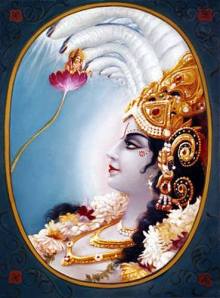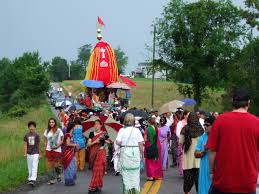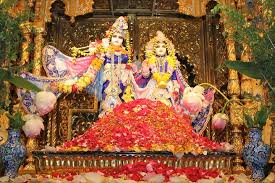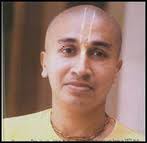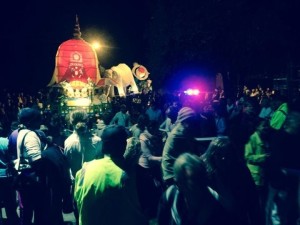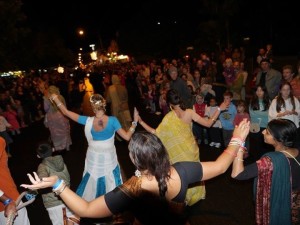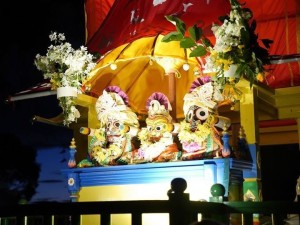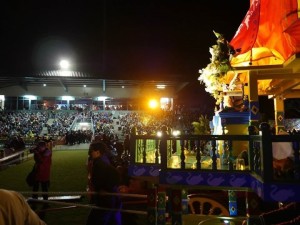Lord Caitanya is the Ultimate Goal of Life
What relevance do samskaras have to Gaudiya Vaisnavas and other questions
→ SivaramaSwami.com
Via Skype conference July 8th. (English/Russian)
The post What relevance do samskaras have to Gaudiya Vaisnavas and other questions appeared first on SivaramaSwami.com.
Conversation with Saumya dd on how ISKCON can care more for its members and devotees who are no longer active
→ SivaramaSwami.com
Manor’s milk hits the headlines
→ Dandavats.com
 After a film company gave young Dom Dwight the task of travelling the world in pursuit of the best ingredients for a cup of coffee, he finally ended up in the Manor's New Gokul farm to sample the cow's creamy milk! After declaring that the Manor's cows were the 'happiest in Britain', he concluded their milk was of the highest quality. The mini documentary received coverage in the Daily Express newspaper. Read more ›
After a film company gave young Dom Dwight the task of travelling the world in pursuit of the best ingredients for a cup of coffee, he finally ended up in the Manor's New Gokul farm to sample the cow's creamy milk! After declaring that the Manor's cows were the 'happiest in Britain', he concluded their milk was of the highest quality. The mini documentary received coverage in the Daily Express newspaper. Read more › Cheer up Brazil, there’s more to life…
→ The Vaishnava Voice
The Great Vishnu, transcendentally situated in a place beyond winning and losing
Three weeks ago I was in Cologne, Germany. We were celebrating the 10th annual Hare Krishna chariot festival there. For four hours we sang and danced our way round the town in the sunshine while members of the team threw rose petals from the top of the wagon, and another handed out smoking sticks of incense. The locals loved it.
It was a Saturday, and the German football fans were getting ready to watch their national team play another game in the sun. Luckily the fans were happy enough to take part in our singing as our procession passed them, standing in groups or filling the pubs noisily to bursting point. They may not have been so accurate with their choice of lyrics to sing back at us, but they cheered us on.
Last night those fans would have been enjoying something close to religious ecstasy, with their 7-1 defeat of Brazil. And last night the Brazilians would have been feeling, no doubt, considerable pain of loss, as their national team passed into football history as losers of the greatest defeat of the World Cup. What an upset for such a footballing nation.
Yet although football is a religion for some, it does not contain all the ingredients that a religion does. Religion, ultimately, is to help us not to become too depressed in our sad moments, and not too elated during our happy ones. Too much of emotional extremes – and not being able to cope in between – is one of the factors leading to stress; and from stress comes depression.
With 53 million prescriptions for depression being handed out in the UK in 2013, there’s an awful lot of people that could do with something to help them get through life. I don’t know what its like in Germany for depression (although there’s probably significantly less depression nationally this morning) but no doubt its comparable. So without medication what is the solution for stress-induced depression?
Religion can also be a cause for mood swings – especially when the religion is the man-made type – as many religions are, but genuine religion, as found in the Bhagavad-gita, will always take us above the ups and downs of life, the winning and losing and the happiness and distress of changing fortunes.
So the people of Brazil can change their fortunes immediately – or their perceptions of their fortunes – by taking to the other thing they like to do, singing and dancing in the streets, and by adding the Hare Krishna chant to their music.
Pandava Sena for A Life Less Ordinary!
→ Dandavats.com
 Being based in Machester Temple, starting with Morning Program and class by Sutapa prabhu and others, they will go to a different town each day to do Sankirtan and then in the evening, they would participate in the local Namahatta! The towns include Sheffield, Preston, Liverpool, Bolton and Birmingham before heading back home to the manor. The whole reasoning behind the trip was to make an offering to Srila Prabhupada, who stressed the distribution of his literatures more than anything else in this movement. Read more ›
Being based in Machester Temple, starting with Morning Program and class by Sutapa prabhu and others, they will go to a different town each day to do Sankirtan and then in the evening, they would participate in the local Namahatta! The towns include Sheffield, Preston, Liverpool, Bolton and Birmingham before heading back home to the manor. The whole reasoning behind the trip was to make an offering to Srila Prabhupada, who stressed the distribution of his literatures more than anything else in this movement. Read more › GITA SEVA INFO
→ Gita Coaching
Harinama in Milan, Italy (15 min video)
→ Dandavats.com
 "I am not in Vaikuntha nor in the hearts of the yogis. I remain where My devotees engage in glorifying My activities." It is to be understood that the Supreme Personality of Godhead does not leave the company of His devotees. Padma Purana Read more ›
"I am not in Vaikuntha nor in the hearts of the yogis. I remain where My devotees engage in glorifying My activities." It is to be understood that the Supreme Personality of Godhead does not leave the company of His devotees. Padma Purana Read more › Volunteers’ Retreats in Bhaktivedanta Manor
→ Dandavats.com
 The volunteers at Bhaktivedanta Manor are an integral part of the community. After all, huge and spectacular festivals such as Janmashtami and Diwali would simply be impossible to have without them! Last Easter Weekend 130 volunteers stayed over at Buckland Hall in Brecon, South Wales where they shared a morning program and participated in a variety of outdoor and indoor fun activities, including a quiz. There were also presentations by, Akhandadhi das, Gaura Gopal das, Navadvip Chandra das, Sahil Agarwal (Chair of the Pandava Sena), Saurabh, and VrajaValasini das spoke on Deity worship. Just weeks later 200 adult and 3 Read more ›
The volunteers at Bhaktivedanta Manor are an integral part of the community. After all, huge and spectacular festivals such as Janmashtami and Diwali would simply be impossible to have without them! Last Easter Weekend 130 volunteers stayed over at Buckland Hall in Brecon, South Wales where they shared a morning program and participated in a variety of outdoor and indoor fun activities, including a quiz. There were also presentations by, Akhandadhi das, Gaura Gopal das, Navadvip Chandra das, Sahil Agarwal (Chair of the Pandava Sena), Saurabh, and VrajaValasini das spoke on Deity worship. Just weeks later 200 adult and 3 Read more › Preaching programs in Chita, Zabaykalsky Krai, Russia (Album 204 photos)
→ Dandavats.com
 Bhakti Caitanya Swami visits and preaches in Chita. Chita is a city and the administrative center of Zabaykalsky Krai, Russia Read more ›
Bhakti Caitanya Swami visits and preaches in Chita. Chita is a city and the administrative center of Zabaykalsky Krai, Russia Read more › July 9th, 2014 – Darshan
→ Mayapur.com
The post July 9th, 2014 – Darshan appeared first on Mayapur.com.
Upcoming New Vrindaban Summer Festivals
→ New Vrindaban Brijabasi Spirit
Spiritual Fun Coming Up This Summer in New Vrindaban:
Two Festivals and A Seminar:
1. Lord Jagannatha’s Ratha Yatra/Festival of the Chariots on Sat. July 19, 2014.
2. Then, the 4th Annual Pushpa Abhishek on Sat. July 26, 2014.
3. On Pushpa Abhishek weekend July 26/27, our esteemed guest His Grace Gauranga prabhu from ISKCON Chowpatty, Mumbai, will give seminars Sat. and Sun., speaking on “Lessons on Vaishnava Relationships” from Gaura Lila .
Srimad Bhagvatam Class – His Holiness Candramauli Swami – 26th June 2014 – 6.05.24
→ Gouranga TV - The Hare Krishna video collection
Srimad Bhagvatam Class – His Holiness Candramauli Swami – 26th June 2014 – 6.05.24
Mahabharata characters 51 – Arjuna 14 – Besting the fearsome elephant and the formidable elephant wa
→ The Spiritual Scientist
This talk is a part of the "Fascinating Mahabharata Characters" series. To know more about this course, please visit: bhakticourses.com
Bhagavatam first canto study 1 – 1.1.1 – The Attributes of the Absolute Truth
→ The Spiritual Scientist
Faithful devotion attracts blessings
→ The Spiritual Scientist
One need only be firmly convinced by the spiritual master that Krishna is the Supreme Personality of Godhead. If one decides this, he can make further progress by thinking of Krishna, chanting of Krishna, and glorifying Him. There is then no doubt that such a fully surrendered devotee will receive the blessings of Lord Krishna”
Srila Prabhupada, Chaitanya Charitamrita, 2.11.51 purport.
HG Narottamananda Prabhu / Kalachandji’s Bhagavad-Gītā Meditation Course – 26
→ Kalachandji's Audio Archive
HG Nityananda Prabhu / SB 10.65.10
→ Kalachandji's Audio Archive
HH Kesava Bharati Dasa Goswami – SB 10.14.08
→ Kalachandji's Audio Archive
HG Ananga Manjari Mataji / CC Adi 13
→ Kalachandji's Audio Archive
Basics Of BHAGAVAD GITA In 5 Sessions
→ Welcome to the official site of ISKCON Perth
Hare Krishna,
It is our great pleasure to announce that Iskcon Perth’s Gita Group would be commencing another series of Bhagavad Gita Introductory Course this month. The course will run over 5 weeks (1.5 hours each Saturday) and will cover BG’s most important and essential topics in brief.
As we can all see the modern day society is groping with problems of all sorts. We do not know where and how to find solutions. And because of these disturbances of mind caused by ethical and social conflicts, indecisions, confusions, material miseries and sufferings etc, the life has become filled with restlessness, dissatisfaction and unhappiness. As we shall see, the Gita helps us make intelligent decisions in every sphere of our life. Bhagavad Gita is also an ultimate guide to step by step spiritual advancement. It contains words of wisdom and practical teachings that contain the answers to the above-mentioned condition of the present-day individual.
Many people in the past have sought help from this book in various aspects and fields of their life and have become successful in understanding themselves, the Supreme and the Supreme Dharma. Hence we encourage you all to please and register for this course and benefit from this timeless wisdom of Gita.
Bhagavad Gita Intro Course
19th July to 16th August
Day and time: Saturdays, 5 to 6.45pm
Venue: ISKCON Perth, 155-159 Canning Rd, Kalamunda
Course Fee: $25 for 5 sessions including prasadam (payable on or before the start date)
You are welcome to circulate this email to your friends and colleagues who might be interested to join the course.
For registrations please call or email-
Punya Sloka 0402 883 883
Raj Kiran 0410 159 789
Rupavati Radharani 0400 883 841
ip.gitagroup@gmail.com
Regards,
Gita Group
Is God hard of hearing that his devotees need to chant his names loudly?
→ The Spiritual Scientist
If Krishna’s ultimate instruction is to give up all duties for surrendering to him why shouldn’t everyone join the temple?
→ The Spiritual Scientist
Festival of Lanterns
→ Ramai Swami
The Lismore City Council committee in charge of the Festival of Lanterns asked the devotees from the Bhakti Centre to participate in their parade by bringing Lord Jagannatha on His Rathayatra chariot.
A state of emergency
→ KKSBlog
(Kadamba Kanana Swami, 16 April 2014, Durban, South Africa, Srimad Bhagavatam 1.7.34)
Transcribed by Radhadyuti dd
 Our strength is not brahman-tejas (brahminical power). Our strength is to carry the mercy of Sri Caintanya Mahaprabhu. That is our strength. Our strength is to, somehow or the other, chant Hare Krsna and induce others to chant Hare Krsna. To become great qualified brahmanas is not so easy. Srila Prabhupada describes in his purports to the first canto of Srimad Bhagavatam that it is an emergency in this age of kali. Therefore for the sake of emergency, we give positions to people although they are not really qualified; we give them positions of brahmanas, we give them positions of sannyasis. Prabhupada said we do this because we need leaders in society. We need leaders! But what is their qualification?
Our strength is not brahman-tejas (brahminical power). Our strength is to carry the mercy of Sri Caintanya Mahaprabhu. That is our strength. Our strength is to, somehow or the other, chant Hare Krsna and induce others to chant Hare Krsna. To become great qualified brahmanas is not so easy. Srila Prabhupada describes in his purports to the first canto of Srimad Bhagavatam that it is an emergency in this age of kali. Therefore for the sake of emergency, we give positions to people although they are not really qualified; we give them positions of brahmanas, we give them positions of sannyasis. Prabhupada said we do this because we need leaders in society. We need leaders! But what is their qualification?
So, this is something to take upon our head: Our acute lack of qualification and the urgency to become more qualified. We have just been given these positions out of emergency and that for once in our life, we should begin to embrace the principles very seriously and not only four regulative principles but also the principles of vaisnava behaviour and so on. Because that is a brahmana; brahmana means principled life and that is a great challenge for us because it means that we have to change. So Krsna consciousness means a great commitment to change and we are given the systems by which we can change.
We Will Bond With Him
→ Japa Group
New initiative: Every wedding guest gets a book now in Bhaktivedanta Manor!
→ Dandavats.com
 Every wedding guest gets a book. A new initiative to distribute books at the Manor weddings is under way. The wedding guests at Bhaktivedanta Manor often includes many people that might not normally visit a temple. They enjoy their visit and often request tours and have many inquiries. Thus the temple wanted to make sure everyone gets a small book to take away with them. Over last two months they have already distributed 2000 books. Read more ›
Every wedding guest gets a book. A new initiative to distribute books at the Manor weddings is under way. The wedding guests at Bhaktivedanta Manor often includes many people that might not normally visit a temple. They enjoy their visit and often request tours and have many inquiries. Thus the temple wanted to make sure everyone gets a small book to take away with them. Over last two months they have already distributed 2000 books. Read more › Vaishnava is simple at heart
→ Servant of the Servant
So stop this dreaming state. Try to understand things with the light of your intelligence, and if your are sincere in this way, without a doubt Krishna will give you full facility to understand Him and become freed of the bondage of ignorance. Nowadays it seems many of the older disciples like yourself are having difficulty. If you do not set the example for the younger students and take the responsibility for instructing them in the right line, how will things go on?
Try to always study our books and see our philosophy from different lights of directions, become convinced yourself of this knowledge and without a doubt all of your difficulties of mind will disappear forever and you will see Krishna face-to-face.
- Srila Prabhupada letter July 8 1972
Narada Muni and Lord Krishna
→ HH Bhakti Caitanya Swami
A note of caution for all visting devotees to Sri Dham Mayapur
→ Dandavats.com
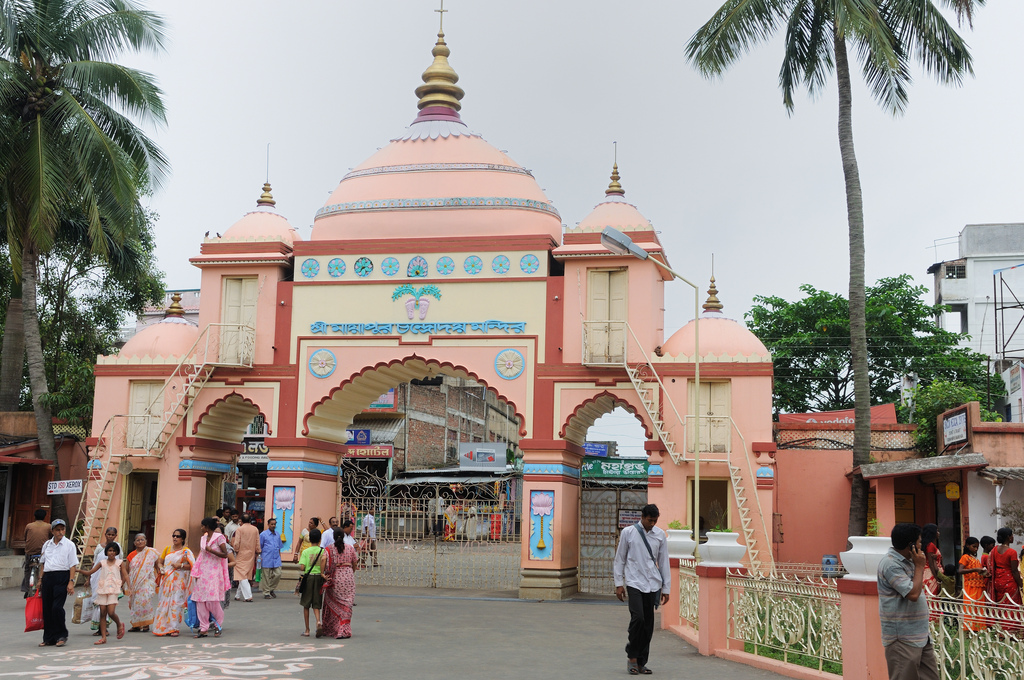 It is very important that devotees who are travelling must have a travel insurance which will cover any accidents or flight delays or unable to catch your flight due to accident or other issues. This you can buy from your airline company which you are flying or outside insurance companies and this is valid for few days the insurance company will cover you for any accidents, train delays ,baggage lost ,accidents,hospitalization etc.
You must have a comprehensive medical insurance (atleast for Rs 3 Lakhs) which will cover you for accidents ,hospitalization etc etc this is non-negotiable .You can do this from india or your home country where you are resident.
Do not disregard this as you are important to everyone of us and your life is also precious for us and we always pray for your safety and safety of your family. Read more ›
It is very important that devotees who are travelling must have a travel insurance which will cover any accidents or flight delays or unable to catch your flight due to accident or other issues. This you can buy from your airline company which you are flying or outside insurance companies and this is valid for few days the insurance company will cover you for any accidents, train delays ,baggage lost ,accidents,hospitalization etc.
You must have a comprehensive medical insurance (atleast for Rs 3 Lakhs) which will cover you for accidents ,hospitalization etc etc this is non-negotiable .You can do this from india or your home country where you are resident.
Do not disregard this as you are important to everyone of us and your life is also precious for us and we always pray for your safety and safety of your family. Read more › Prabhupada Letters :: Anthology 2014-07-08 16:50:00 →
Prabhupada Letters :: 1966
Prabhupada Letters :: Anthology 2014-07-08 16:46:00 →
Prabhupada Letters :: 1967
Prabhupada Letters :: Anthology 2014-07-08 16:44:00 →
Prabhupada Letters :: 1969
Prabhupada Letters :: Anthology 2014-07-08 16:34:00 →
Prabhupada Letters :: 1971
Prabhupada Letters :: Anthology 2014-07-08 16:31:00 →
Prabhupada Letters :: 1972
Prabhupada Letters :: Anthology 2014-07-08 16:28:00 →
Prabhupada Letters :: 1972
6th Palanquin and Harinam Festival for the year at Sri Jagannatha Mandir , Kuala Lumpur (Album 21 photos)
→ Dandavats.com
 On the 28th June Sri Jagannatha Mandir , Kuala Lumpur Harinama Team organized a festival of Harinama Sankirtana ,Palanquin Procession , Book distribution, prasadam distribution in Bandar Kinrara , Puchong ,Selangor . This is the second year at Bandar Kinrara introducing the Holy Name and 35 devotees participated in this Harinama . Devotees , children and residents followed Sri Gaura Nitai and Srila Prabhupada in the palanquin ,singing along in harmony and dancing joyously on the streets with kirtan lead by HG Siva Caitanya Das .Every other house made an offering to Sri Gaura Nitai .It ended at a residence home with an ecstatic kirtan ,bhoga offerring and arati to their Lordships . The harinama was very well received in Bandar Kinrara and it proved to be a potential area for devotees to continue preaching . Read more ›
On the 28th June Sri Jagannatha Mandir , Kuala Lumpur Harinama Team organized a festival of Harinama Sankirtana ,Palanquin Procession , Book distribution, prasadam distribution in Bandar Kinrara , Puchong ,Selangor . This is the second year at Bandar Kinrara introducing the Holy Name and 35 devotees participated in this Harinama . Devotees , children and residents followed Sri Gaura Nitai and Srila Prabhupada in the palanquin ,singing along in harmony and dancing joyously on the streets with kirtan lead by HG Siva Caitanya Das .Every other house made an offering to Sri Gaura Nitai .It ended at a residence home with an ecstatic kirtan ,bhoga offerring and arati to their Lordships . The harinama was very well received in Bandar Kinrara and it proved to be a potential area for devotees to continue preaching . Read more › Holi the Festival – Italy, Florence (1 min video and 58 photos)
→ Dandavats.com
 With Vaiyasaki prabhu and the Hare Krishna band. Read more ›
With Vaiyasaki prabhu and the Hare Krishna band. Read more › Mahabharata Talk on YouTube
→ NY Times & Bhagavad Gita Sanga/ Sankirtana Das
It’s in three parts - on Youtube search for Andy Fraenkel to access the other two.
3500 devotees for the Jagannath Ratha Yatra at Bhaktapur, Nepal, 5th July 2014 (Album 422 photos)
→ Dandavats.com
 Bhaktapur, also Bhadgaon or Khwopa, is an ancient Newar town in the east corner of the Kathmandu Valley, Nepal, about eight miles from the capital city, Kathmandu. Bhakta Naresh: Jagannath Ratha Yatra at Bhaktapur 5th July 2014, Saturday. Organized by Iskcon Bhaktapur. Huge number of Participation. About 3500 devotees attended this Ratha Yatra. After Ratha Yatra there was a Stage Program with Dances, Drama, Glories of Lord Jagannath by His Grace Patri Prabhuji, Fire Dance Performance, Small Concert and Video Presentation of the Jagannath Temple located in Bhaktapur that had been taken in care of ISKCON BHAKTAPUR..
Jaya Jagannatha Swami. Read more ›
Bhaktapur, also Bhadgaon or Khwopa, is an ancient Newar town in the east corner of the Kathmandu Valley, Nepal, about eight miles from the capital city, Kathmandu. Bhakta Naresh: Jagannath Ratha Yatra at Bhaktapur 5th July 2014, Saturday. Organized by Iskcon Bhaktapur. Huge number of Participation. About 3500 devotees attended this Ratha Yatra. After Ratha Yatra there was a Stage Program with Dances, Drama, Glories of Lord Jagannath by His Grace Patri Prabhuji, Fire Dance Performance, Small Concert and Video Presentation of the Jagannath Temple located in Bhaktapur that had been taken in care of ISKCON BHAKTAPUR..
Jaya Jagannatha Swami. Read more › 